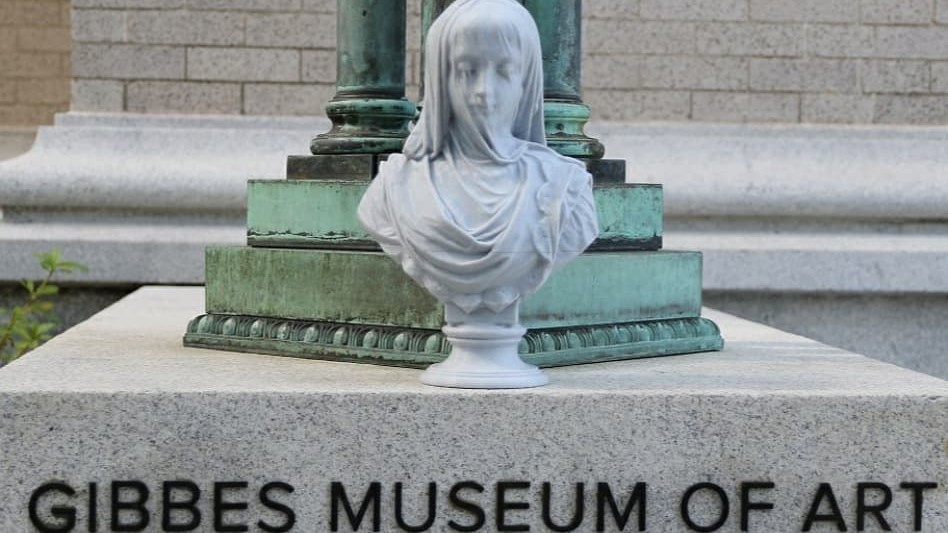
An interdisciplinary team from The Citadel, working with the Gibbes Museum of Art, is lifting the veil that separates the artistic from the technological.
The Veiled Lady — a masterful marble statue created by Pietro Rossi in 1882 — is one of the most well-known pieces of art in the Gibbes.
But the photo above is not of the Veiled Lady. Not the original one, at least.
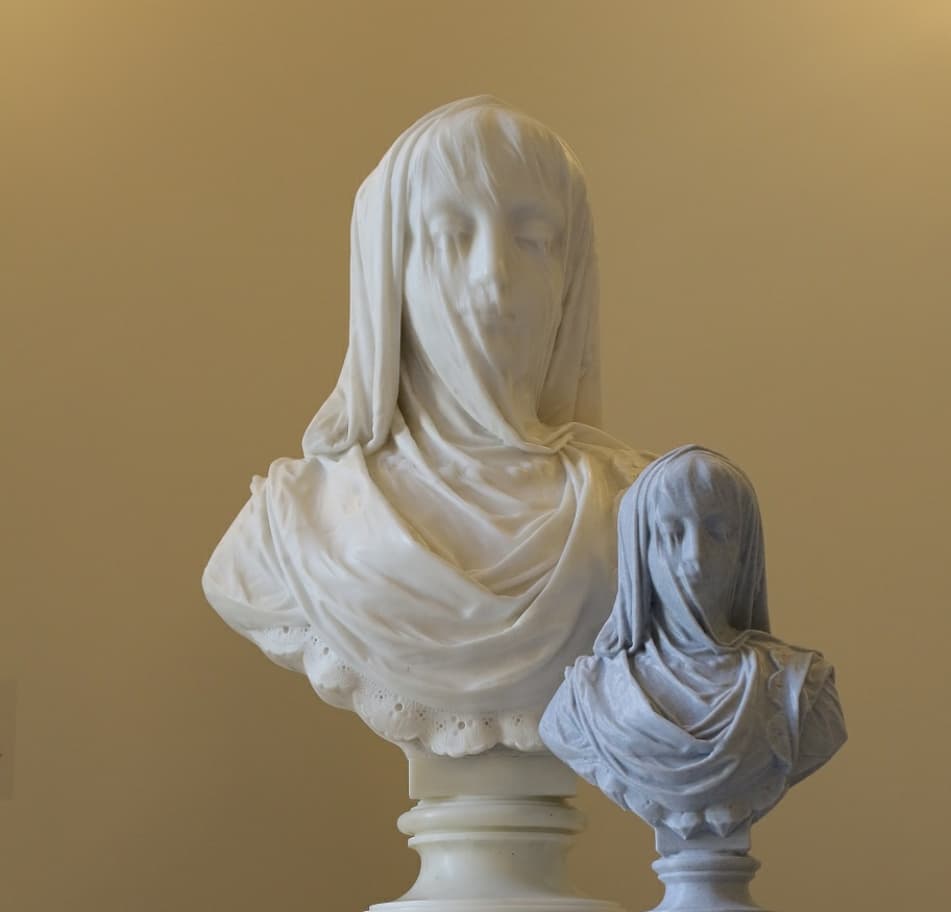
Thanks to three departments on campus, and a 3D-printer company created by a former cadet called Evolve 3D, the priceless statue can now be recreated, anywhere, for less than a dollar.
Not only that, but the 3D-printed version of the statue can be touched, something that’s attractive to the museum’s everyday visitor and especially important for visually impaired guests.
“When I first saw the iconic Veiled Lady sculpture at the Gibbes Museum, I, like many, was drawn to the stunning textures of this intricately-carved marble,” said Tiffany Silverman, director of The Citadel Fine Arts program. “At the time, as a museum educator, I wished that everyone could have access to experience this artwork in a more tactile, immediate way. Fifteen years later, the perfect combination of talented colleagues and innovative technology has, at last, made this dream possible.”
The Citadel Fine Arts Department, the Baker School of Business Innovation Lab, The Citadel Makerspace and Evolve 3D worked together to make the project possible — and to help make art more accessible outside of a museum.
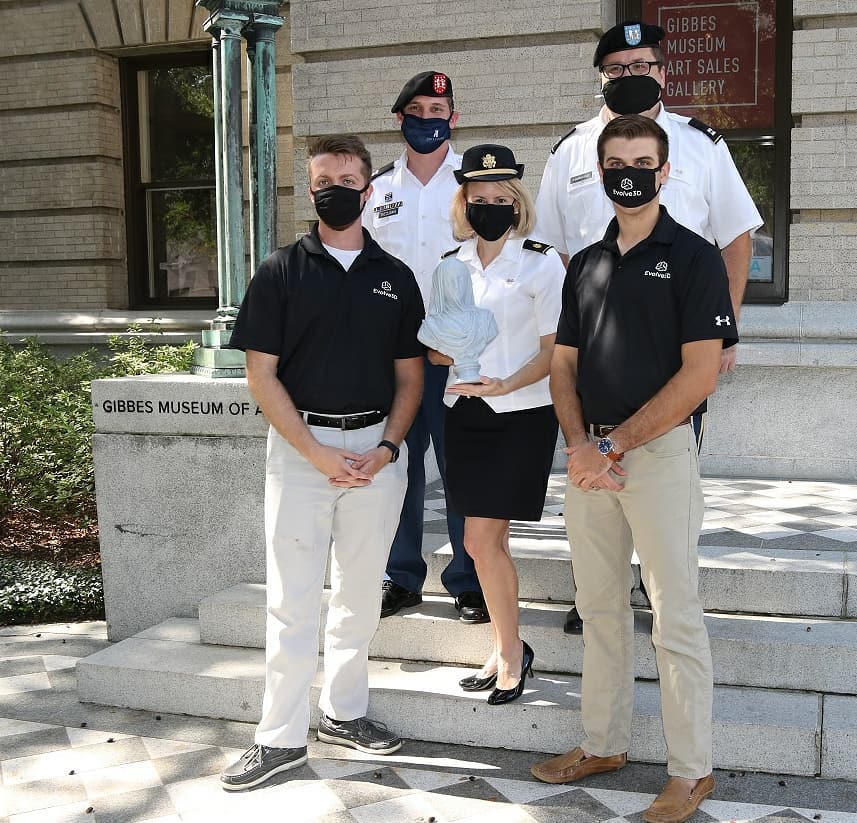
Evolve 3D has its own interdisciplinary connections to The Citadel. The business (then called the Cambrian Project) was initially created as part of the annual Baker Business Bowl, a program aimed at helping budding entrepreneurs turn their ideas into income.
Though the team didn’t win the first or second place cash prizes, Ben Scott — the founder and CEO of Evolve 3D — says they earned something more valuable.
On the company’s website, he wrote:
“Countless hours of work, every night in the library, then the garage, studying business, writing/rewriting the business plan, working/reworking financial predictions, not going out on weekends, straining personal relationships for months, and still lost. I didn’t sleep for days following, but ironically, I think we still won. The lesson learned from that failure is worth a lot more than $10,000.”
Evolve 3D also loaned one of their beta printers, named Eve, to the museum which will use it to produce more 3D prints of art.
“This innovative and interdisciplinary partnership with The Citadel has proven to be an exciting way to engage our community with art and new technology,” said Sara Arnold, the director of cultural affairs at the Gibbes Museum of Art. “Our visitors are amazed to see the 3D printer in action at the Gibbes. Bridging art and technology opens a whole new world of creativity and accessibility and we are so grateful to Tiffany Silverman and The Citadel cadets who have shared their time and expertise with us.”
As part of the collaboration, James Bezjian, Ph.D, shared his groundbreaking use of a high-resolution 3D scanner that he uses to document artifacts. Dan Hawkins brought the technology of The Citadel’s Makerspace, including 3D printers. Scott — one of Bezjian’s students — started Evolve 3D along with Fine Arts minor — and one of Silverman’s students — Ethan Warner. The Gibbes Museum, current partner of The Citadel’s Fine Arts program, was looking for ways to increase access to their collection for both virtual and in-person audiences.
To that end, and thanks to the entire team involved, a 3D print of the Veiled Lady is also currently on display, waiting to greet visitors at the Charleston Area Convention and Visitors Bureau.
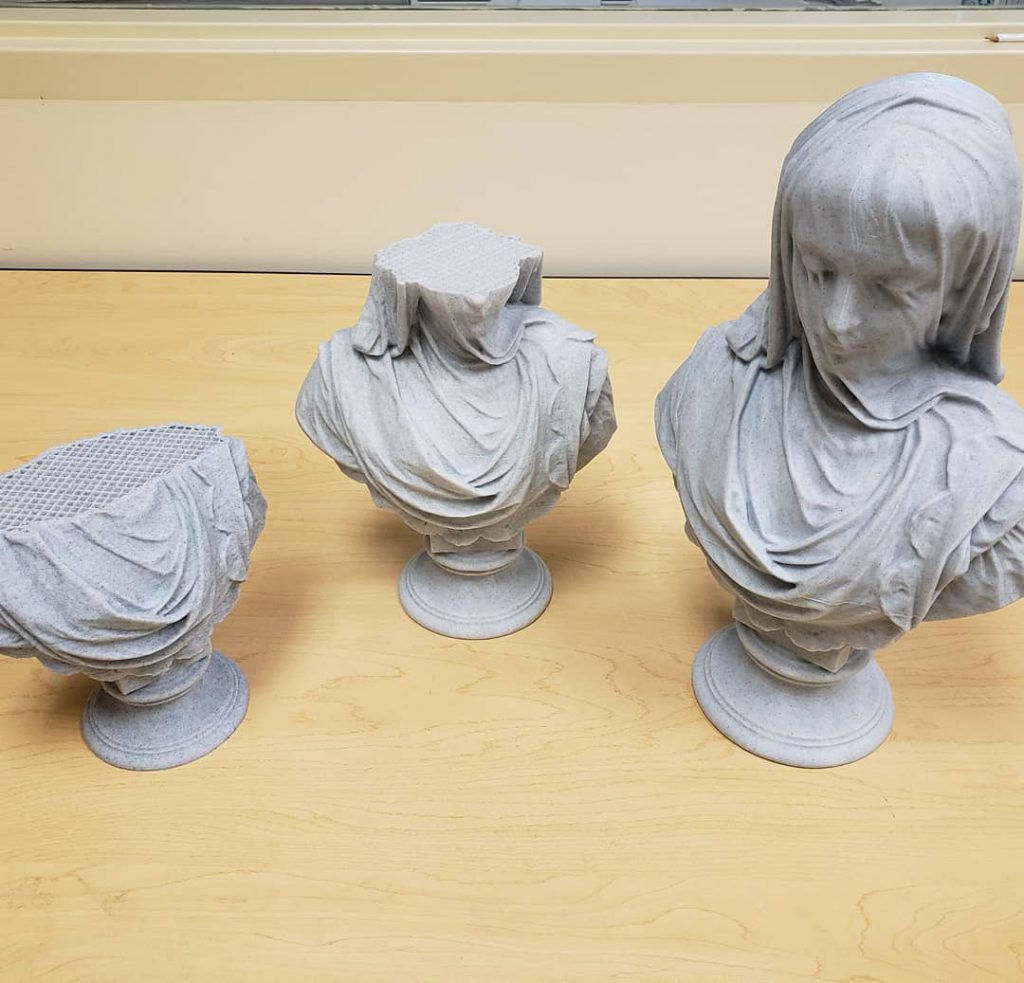

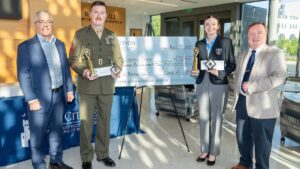 Two teams win the 11th annual Baker Business Bowl, a first for the event
Two teams win the 11th annual Baker Business Bowl, a first for the event Upcoming News from The Citadel – April 2025
Upcoming News from The Citadel – April 2025 Upcoming News from The Citadel – November and December 2024
Upcoming News from The Citadel – November and December 2024



